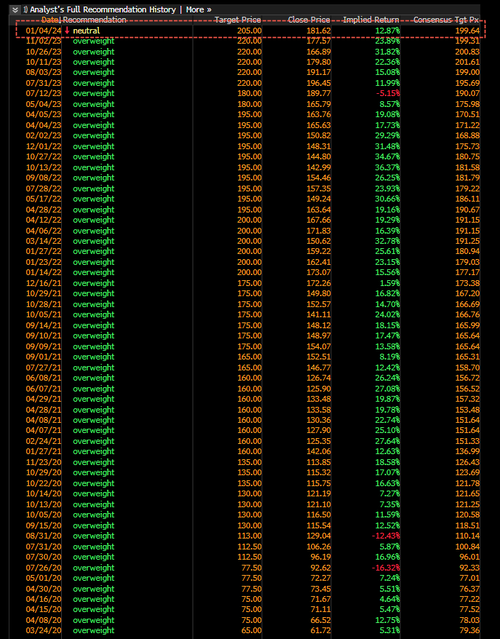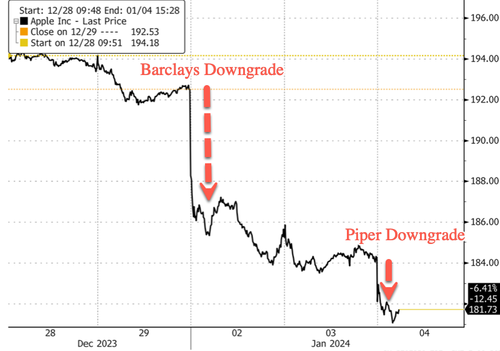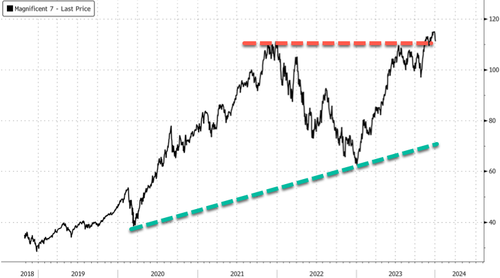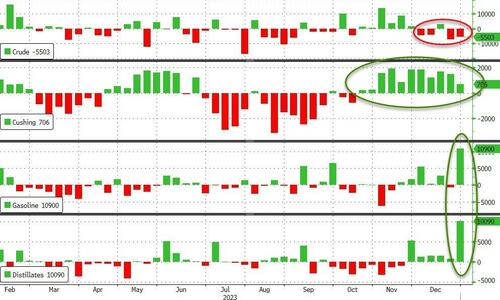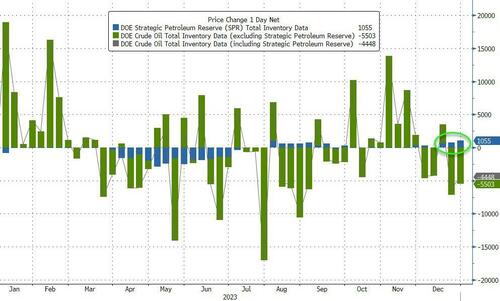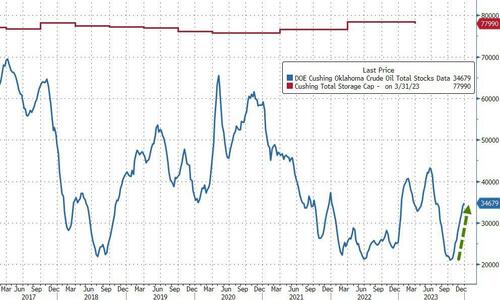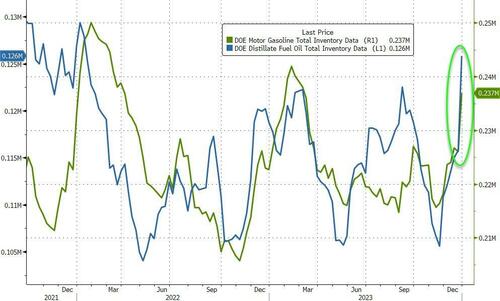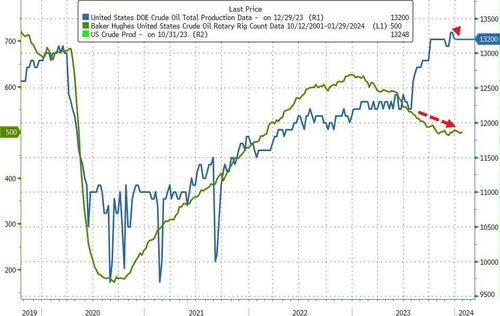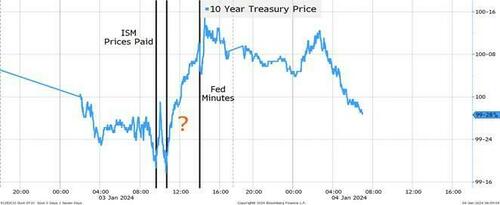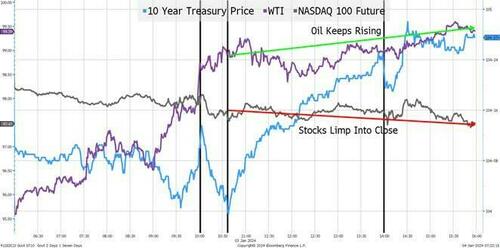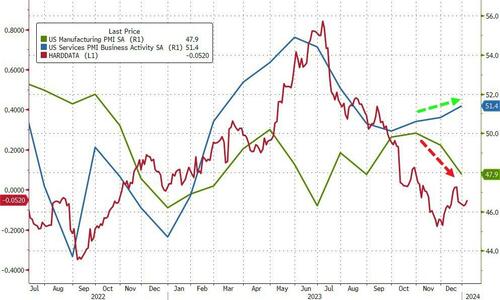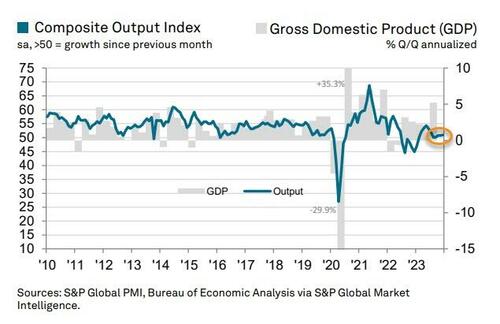Clinton-Appointed Judge Dismisses Trump Ballot Disqualification Case ‘With Prejudice’
Authored by Jack Phillips via The Epoch Times (emphasis ours),
A federal judge in California dismissed a lawsuit that sought to keep former President Donald Trump off the Republican primary ballot.
On Wednesday, [Clinton appointed] District Judge David Carter granted a motion to dismiss the lawsuit “with prejudice,” which means that it can’t be submitted to the same court again, according to court papers.
A plaintiff attempted to argue that they suffered “emotional injury” due to the breach of the U.S. Capitol on Jan. 6, 2021, and watched the events unfold on television, on the radio, and in various publications. They then argued that the incident caused them “severe emotional distress” and then filed a lawsuit to keep the former president from California’s ballots.
But the judge wrote that because the events occurred “more than two years before the plaintiff” filed suit, it was outside of the two-year statute of limitations.
The decision by Judge Carter, a Clinton-appointed jurist who has ruled against President Trump in a separate case, was posted online by former Republican National Committee for California chairwoman Harmeet Dhillon.
“The remnants of the last California case to keep President Trump off the ballot here were dismissed today by Judge David O. Carter!!” she wrote on X on Wednesday.
In recent days and weeks, there have been a number of lawsuits filed in different states to try and bar President Trump from appearing on the ballot ahead of the 2024 election. Those suits have claimed that the former president engaged in “insurrection or rebellion” against the United States under an interpretation of the Constitution’s 14th Amendment’s Section 3, which was written in the immediate aftermath of the U.S. Civil War.
At least two of those challenges have seen some success in Maine and Colorado, although there has been widespread speculation that higher courts or even the U.S. Supreme Court would strike those rulings down.
Days before Christmas, the Colorado Supreme Court ruled to keep the former president off the primary ballot in the state, which was promptly appealed to the Supreme Court. Last week, Maine Secretary of State Shenna Bellows, a Democrat, unilaterally decided to keep President Trump off the ballot, which was similarly appealed.
Ahead of the Supreme Court appeal, Trump campaign spokesman Steven Cheung said that “unsurprisingly, the all-Democrat appointed Colorado Supreme Court has ruled against President Trump, supporting a Soros-funded, left-wing group’s scheme to interfere in an election on behalf of Crooked Joe Biden by removing President Trump’s name from the ballot and eliminating the rights of Colorado voters to vote for the candidate of their choice.”
Legal analysts have suggested that the U.S. Supreme Court would take up those two cases and likely would rule against the plaintiffs at least on procedural grounds. However, it’s not clear whether the court will take up the more thorny questions presented under the 14th Amendment’s insurrection clause.
“It seems a certainty that SCOTUS will have to address the merits sooner or later,” Rick Hasen, a law professor at the University of California-Los Angeles, wrote on his website last month, referring to the Supreme Court.
Other Attempts
In California, California Secretary of State Shirley Weber included the former president on the primary ballot list alongside other GOP presidential challengers such as former U.N. Ambassador Nikki Haley and Florida Gov. Ron DeSantis. It came after Democrat Lt. Gov. Eleni Kounalakis wrote a letter suggesting that officials evaluate whether the former president is eligible to run in California.
“I urge you to explore every legal option to remove former President Donald Trump from California’s 2024 presidential primary ballot,” Ms. Kounalakis wrote on Dec. 20. “The constitution is clear: you must be 35 years old and not be an insurrectionist.”
But her letter drew pushback from Gov. Gavin Newsom, also a Democrat, who chided President Trump but described the challenges as a “political distraction.”
“In California, we defeat candidates at the polls,” he said. “Everything else is a political distraction.”
Other than Judge Carter’s decision this week, several other federal judges have dismissed attempts to block the former president from appearing on ballots. In a ruling issued in late December, U.S. District Judge Leonie Brinkema wrote that the plaintiffs—two activists—who filed a lawsuit against President Trump in Virginia to keep him on that state’s ballot lacked standing.
“At least five additional federal courts have concluded that citizens attempting to disqualify individuals—including former President Trump—from participating in elections or from holding public office based on the January 6, 2021 attack on the United States Capitol lacked standing,” she wrote in a ruling.
In a statement, the Trump campaign hailed the decision, noting that federal courts in West Virginia, New Hampshire, Florida, Arizona, and Rhode Island along with state courts in Minnesota and Michigan have dismissed similar suits.
Tyler Durden
Thu, 01/04/2024 – 12:00
via ZeroHedge News https://ift.tt/o5ZWjRY Tyler Durden




